Splinter Cell: Conviction Review
Conviction changes the stealth gameplay of its predecessors with mixed results.
Conviction represents a change to the Splinter Cell franchise and a change that is not completely successful. Aside from being much easier than previous games it also contains more action. So much so that one segment plays out exactly like a third person shooter. Not all the changes are detrimental to the franchise, the Mark and Execute component actually improves some of the gameplay. The AI is usually competent to go up against but occasionally does some pretty silly things. The presentation of the game is relatively effective and using projected messages as a tutorial and for mission objectives is actually unobtrusive. The changes to the basic mechanics of the series are not replaced by anything of comparable quality and consequently the stealth gameplay lacks.
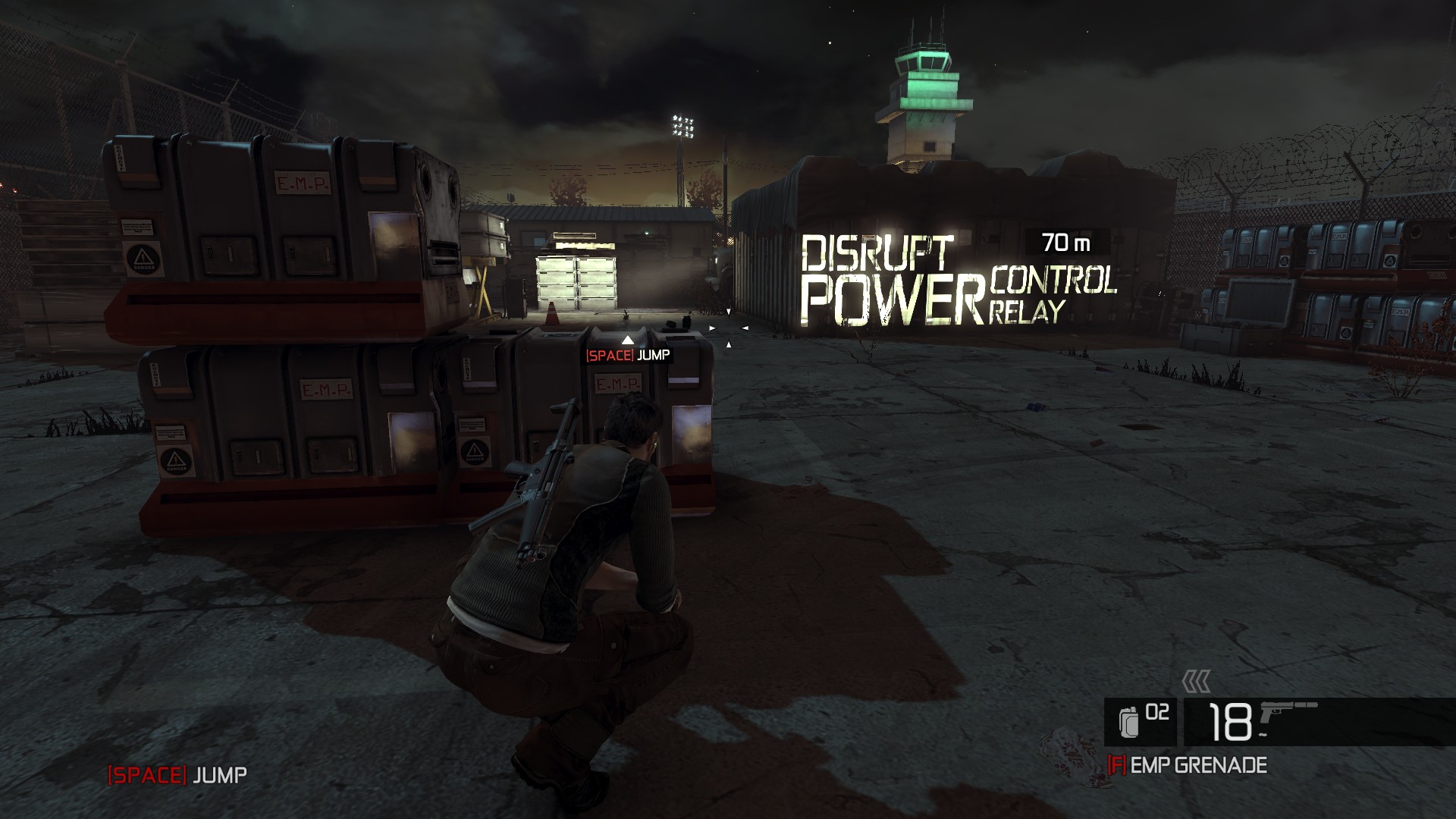
Projected text may inform you of your next objective
Conviction uses the Unreal 2.5 engine, although visually it does not look very old at all. Performance of the engine is satisfactory for the visuals and the lighting is good with Sam able to shoot out most lights to hide in the darkness. The game also includes a system where objectives and hints are projected onto the world. Opening levels featured words like “Cover” and “Climb” in obvious places to gently bring players into the action. As the game progresses these projected messages simply point out your next objective. It blends in naturally as you move throughout the levels and these messages slowly come into view. They do use this projected system in a later cut scene to convey obvious emotions and disappointingly it does reduce its overall effectiveness.
The visuals turn greyscale whenever Sam is in stealth mode and enemies are colored to highlight them in the world. I’m not convinced this change in color saturation works too well. In greyscale the shadows and dark hiding places become much less obvious as they blend into the surrounds. So you are more likely to accidently move out of the cover of darkness and receive a face full of abuse and bullets. Also in stealth the game also looks visually unappealing because of this lack of color and seems to very subtly punish those who do attempt to play in an unseen fashion. Not all the stealth is done just in the cover of darkness however.
Sam hides just as much behind objects in the bright lights as he does moving swiftly through the shadows. The level design in some situations almost relies on the careful positioning of half height walls or boxes. The upside to this is you can close quarters kill an enemy who is near an object you are hiding behind. The position of these boxes and walls could be directly comparable with other third person shooters with cover mechanics where you move from cover to cover and pop up only to shoot. It also highlights at times how unsatisfying the campaign level design is.
Aside from the position of these contrived boxes the game also features its share of platforming. This might be climbing up walls, over balconies or up and along pipes. Some can be done during combat where you move from window positions or in pipes above enemies. In particular the position of some brightly colored pipes is completely ludicrous and serves only as a simple transition from one point to another; they really needed to try harder here.
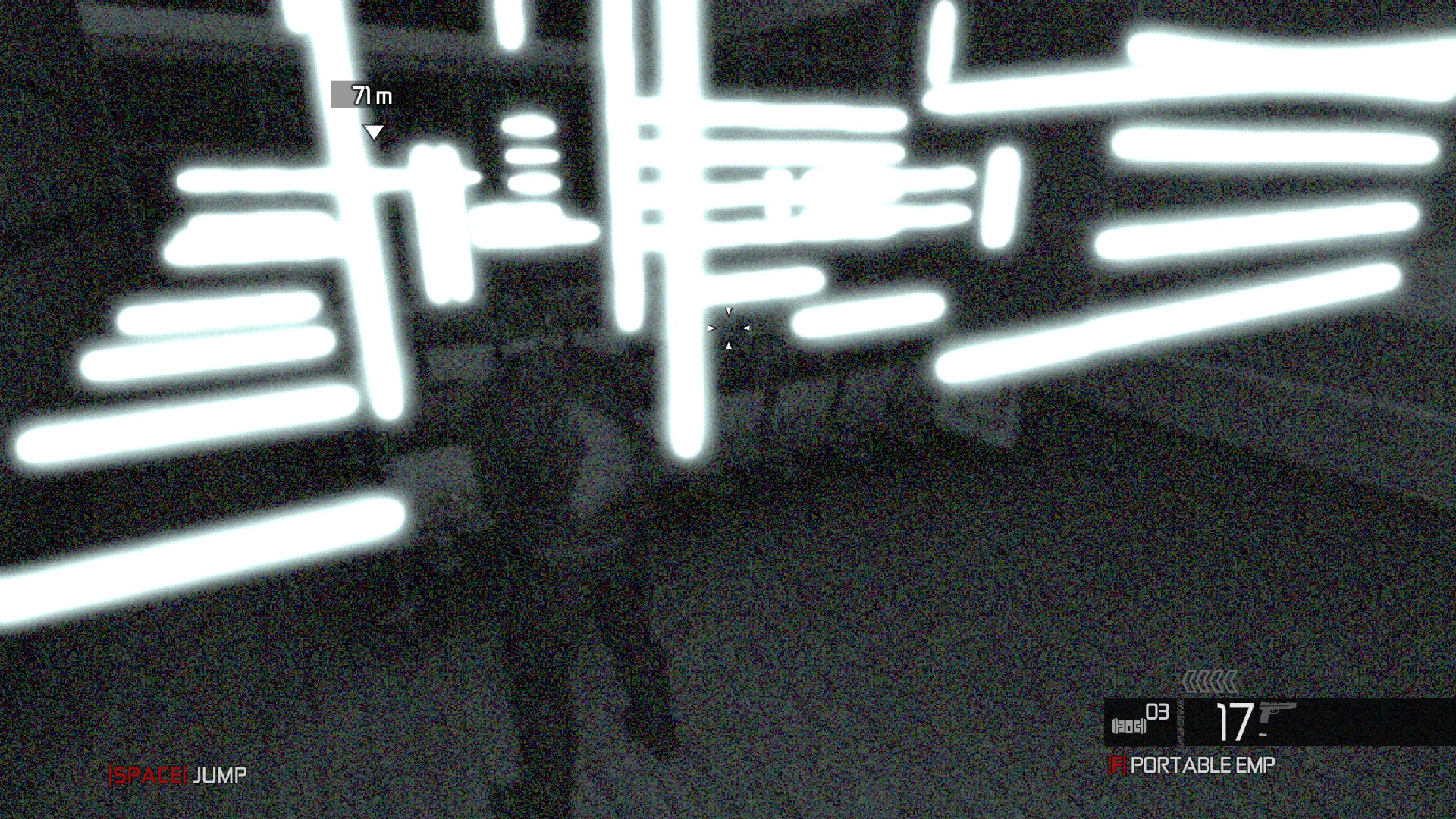
The security guys went a bit overboard
Perhaps it’s telling that Conviction, with so many comparisons to a third person shooter, actually contains a full action level. This action sequence is not only a poor third person shooting sequence but exaggerates the flaws in level design, pacing and even the AI system. On the PC you can easily zoom in on soldiers who are far away and take them down quickly, making this direct action sequence the easiest part of the entire game. One brief section even plays out in a similar fashion to a foot chase sequence in Call of Duty 4 but naturally it’s not as impressive even from a story perspective.
It’s not fair to talk about the lapses in presentation or pacing and not directly link that back into the story telling or premise of the entire game. Unfortunately I found the story exceedingly dull and in many cases predictable. Opening scenes actually feature some pretty contrived dialogue, especially with Sam talking to his daughter. Sam is no longer part of Third Echelon and he is in a pretty bad mood since his daughter Sarah was killed in a car crash. Events catch up with Sam and he’s quickly back on the aggressive to try to find out more about this supposed accident. There are some in game cut scenes and also some interactive segments with Sam as he breaks various bad guys by slamming them into objects carefully placed around interrogations.
These interrogations seem to be nothing more than basic interactive cut scenes that see Sam continue to release more aggression as he slams the face of some poor villain into a piano or mirror. They certainly make Sam look like a real tough guy, but for me they also make him out to be a real jerk. A non-interactive interrogation would convey the same aggression and be far more seamless. Perhaps this added aggression helps Sam perform the impressive Mark and Execute manoeuvres.
Mark and Execute emphasizes the amount of direct action in the game by allowing Sam to quickly eliminate a group of up to four enemies. To unlock the ability to execute you must first perform a close quarter’s kill on a target. During the campaign there are some blatantly placed close quarters targets for easy recharge. They become less obvious or include bigger groups of enemies in positions that require more thought than in the opening levels. You can use a simple silenced headshot so you aren’t dealing with more enemies than your weapon will allow to Mark.
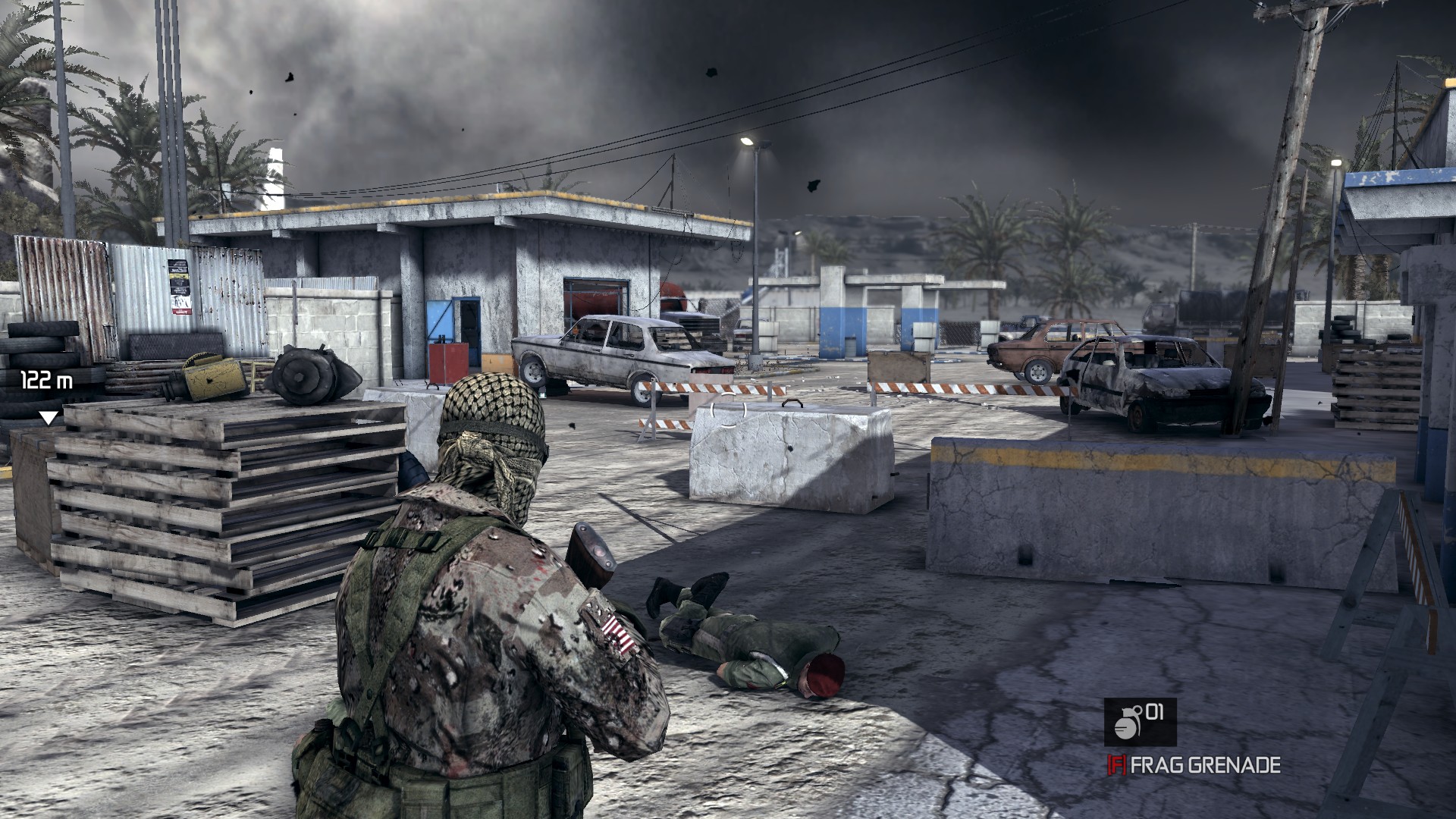
This full action sequence is more boring than it looks
The Mark feature itself adds quite a bit to the planning phase, since it enables a very basic way to track foes through walls. The game will put a grey arrow above enemies which will turn red when you can execute that guard. Being able to Mark helps avoid situations where you walk out in front of a patrolling guard and also lets you time executions when you can’t directly see those you have marked. It’s nice to be able to track movements of enemies and work out where multiple patrols are going to cross paths.
Mark and Execute gets even more use during the later part of the game, and it requires some quick thinking to use it efficiently. The last few levels have guards that move aggressively toward your location and require quick movement behind shadows or in between strategically placed cover. It also requires careful positioning in order to maximize the takedown angles. You may need to whittle away larger groups before executing the remaining targets. Mark and Execute is actually one of the better ideas placed in Conviction although it seems to rely on it too heavily and makes stalking your AI prey seem less important.
Enemy AI varies in quality but is generally fairly capable and proves satisfying when taking on a group. They are very vocal and will make their presence and thought process well known to Sam. You don’t need to watch them directly when they announce what they are doing or about to do. Once you are spotted the AI will remember your last known location, indicated to Sam as a ghost. Unfortunately a few times the guards closed in on this location and looked directly at the ghost as though they were waiting for Sam to materialize in front of them.
The final piece to the Conviction puzzle is the how multiplayer works in the Splinter Cell universe. Sam actually doesn’t make an appearance instead two agents from Russia and America are left to clean up the mess. Of the multiplayer the most interesting mode seems to be the co-op levels, each actually contains a little bit an opening presentation and links with the main campaign in some way. It sounds great but unfortunately the multiplayer component of Conviction is close enough to broken on the PC.
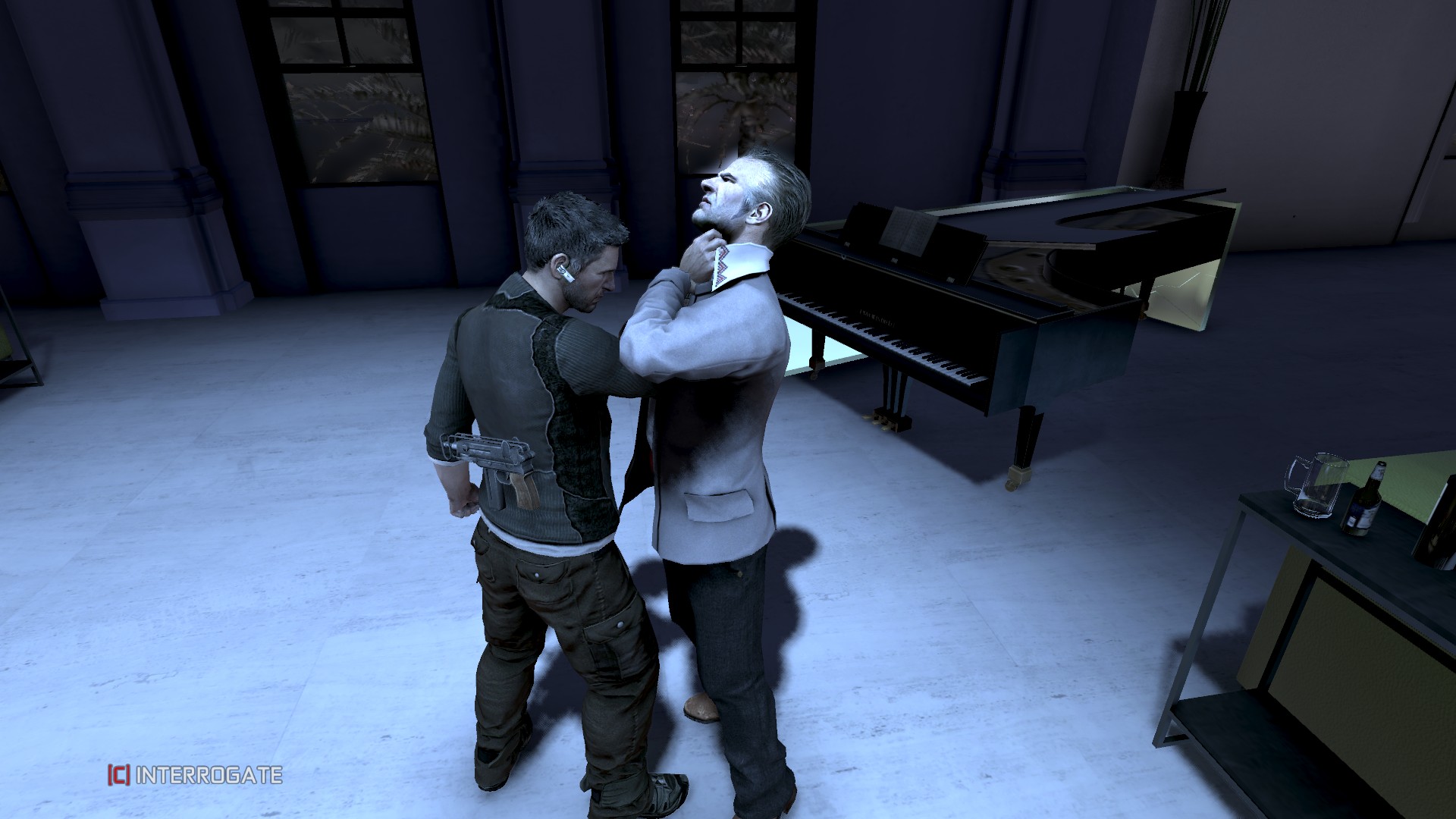
Oh look, a conveniently placed piano to smash your head against
Hopefully the Ubisoft servers are online when you try the game because they were down more than a few times during my play through. Keep in mind you need both the UPLAY and MP servers operational to run the multiplayer component. Conviction is another Ubisoft title that requires constant internet connection, fortunately I was not let down by this requirement but many still lament it. When the servers are up I was waiting 20-30 minutes before a game was found. Once in the game you might not have to wait long before you are booted out back to the menu when connection is lost. Telltale signs might include excessive stuttering – in one case the game was stuttering during a cut scene. In multiplayer the mouse response time is much lower than single player. Although the mouse speed is not crucial when in stealth it makes the gameplay feel sluggish.
If you are lucky enough to play the multiplayer it can be relatively enjoyable, grouping together for a dual execute and moving throughout the level simultaneously is quite effective. Deniable Ops is a single player version of the co-op levels although you naturally don’t have to deal with the connection issues or mouse lag. Perhaps surprisingly the levels are actually more fun than the entire campaign. They are more open allowing you to progress in any direction and take down targets in any order you wish. It’s actually the sandbox type stealth gameplay that would have been better served instead of the very restricted campaign.
Conviction is almost an action game and even parts of the stealth could be categorized as fast paced during the campaign. There are some good ideas here but there are also some oversights to the gameplay and the series. Gamers who want to see Sam Fisher grab a hold of a bad guy and smash him through glass will be more than happy. If you were frustrated with the difficulty of other Splinter Cell games then Conviction provides little challenge. It’s really the type of game that will suit players who found the other Splinter Cell games a little slow.
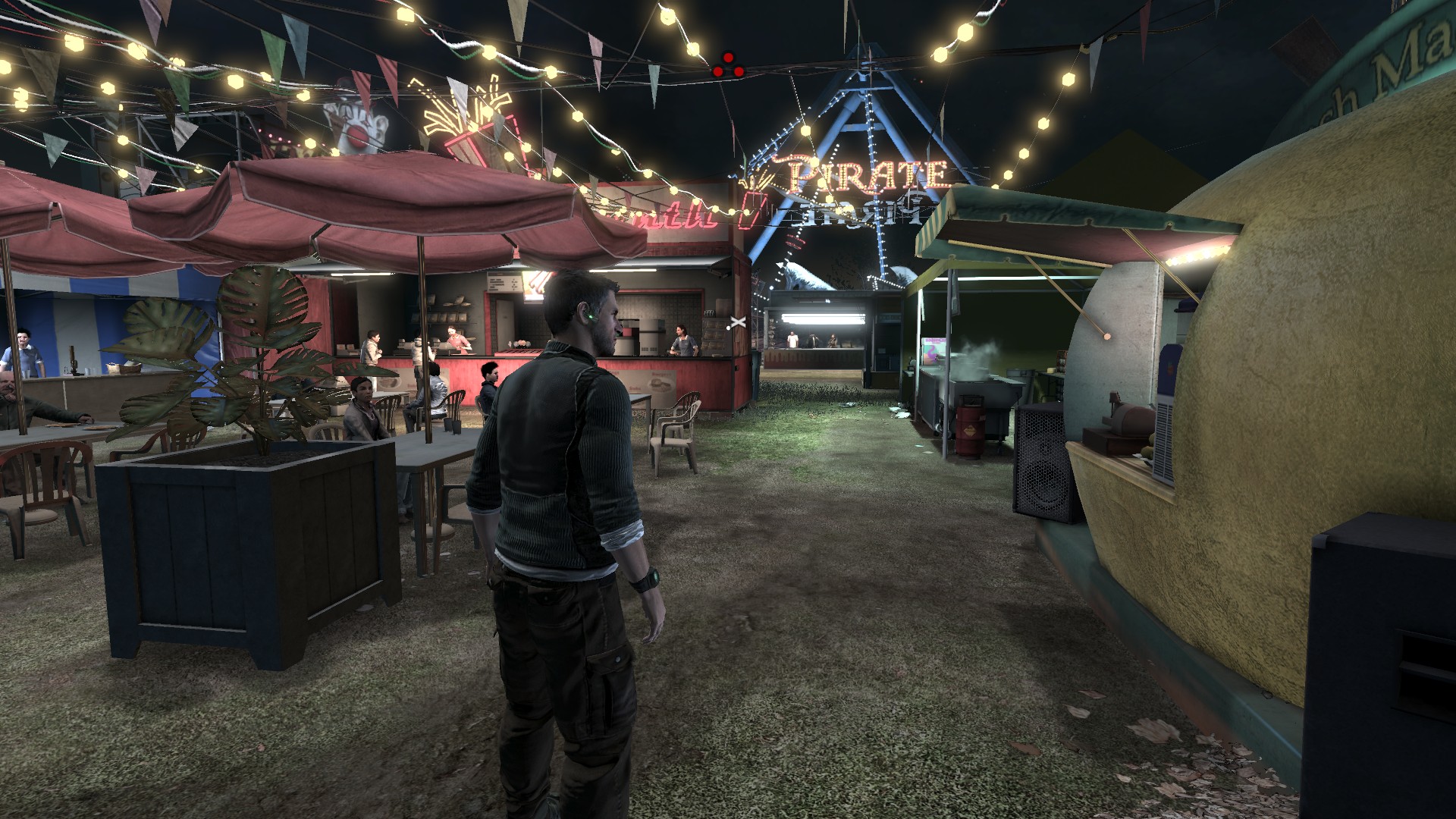
Sadly you don’t get to go on the fun rides
Conviction is much easier on realistic than the original Splinter Cell was on normal. Not being able to move a body in a situation where a patrolling guard or camera will cause instant mission failure is one oversight I cannot forgive. The campaign isn’t particularly long, but it’s not much shorter than the other games. Stealth fans are warned this game is not like the impressive Chaos Theory. Many may be able to forgive Ubisoft for providing a more action orientated experience, I personally would much rather a better stealth game.
 Comments
Comments
|
||||||||||||||||||||||||||||||


 Nov 9, 2010 10:29:58 (Nov 9, 2010 10:29)
Nov 9, 2010 10:29:58 (Nov 9, 2010 10:29)


















